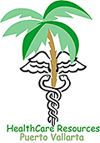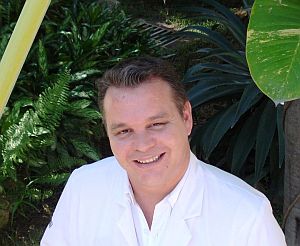Puerto Vallarta, Mexico - HealthCare Resources is proud to present a new Vascular Clinic! This is a screening clinic to check on your leg and feet circulation. (We still have space for the October 17, 2011 clinic and will be repeated on November 21 and December 28, 2011.)
This will be done with Dr. Escoto, a wonderful, bilingual vascular surgeon. And exciting news! He now is able to do the varicose vein procedure via Laser! Non-invasive, no overnight stays in the hospital! The article below was written in conjunction with Dr. Escoto.
What are varicose veins? Veins that appear to be gnarled and enlarged. Any vein can become "varicose" (which by definition means "abnormally dilated or swollen") but most commonly affected are veins in the legs and the feet. Standing and walking increases the pressure in the veins of your lower body.
Symptoms of varicose veins can include:
• Veins that are dark purple or blue in color
• Veins that appear twisted and bulging, sort of cord-like
• An achy or heavy feeling in your legs
• Burning, throbbing, muscle cramping and swelling in lower limbs
• Pain worsens after extended sitting or standing
• Skin ulcers near the ankles, which can mean a serious form of vascular disease
Spider veins are similar to varicose veins but they are much smaller. They are closer to the surface of the skin and are often red or blue. They can occur on the legs but as well, found on the face. They vary in size and sort of look like a spider web.
What are the causes? Veins return the blood from the rest of your body to your heart and is re-circulated. To return the blood to your heart, the veins in your legs must work against gravity. Muscles contract and your lower legs act as pumps and elastic vein walls help return the blood to your heart. Tiny valves in your veins open as the blood flows toward your heart and then close to stop blood from flowing backwards.
Age and pregnancy can be two of the main causes. Women are more likely to develop the condition. If other family members had varicose veins, chances increase. Being overweight puts added pressure on your veins. If you sit and-or stand for long periods of them the blood does not flow as well.
To test for varicose veins the physician will do a physical exam including examining your legs while you are standing to check for swelling. You might also need an ultrasound to see if the valves in your veins are functioning normally or if there is any evidence of a blood clot. This is a non-invasive procedure.
Treatments:
• Sclerotherapy (for spider veins): These are injections for small and medium sized veins (mainly spider veins) with a solution that scars and closes the veins. Oftentimes this needs to be done more than once.
• Laser: Physicians are now using a new technology of laser treatment to close off smaller varicose veins and spider veins. This works by sending strong bursts of light onto the vein, which makes the vein slowly fade and disappear. Non-invasive and no needles or incisions.
• Catheter assisted procedures: The physician inserts a thin tube into an enlarged vein, heating the tip of the catheter. As the catheter is removed the heat destroys the vein by causing it to collapse and seal. This is usually done for larger varicose veins.
• Vein Stripping: This involves removing a long vein via small incisions.
• Phlebectomy: The physician removes smaller varicose veins through a series of tiny skin punctures.
• Endoscopic vein surgery: This is done in advanced cases involving leg ulcers. A thin video camera is inserted in your leg to visualize and close varicose veins and then the veins are removed through small incisions.
There are some self-care measures that can be done to decrease the discomfort that varicose veins cause. Exercise, watch your weight, low-salt diet, avoid high heels, elevate your legs, avoid long periods of sitting or standing, don't sit with your legs crossed.
For further information on the laser surgery or to make an appointment in one of our upcoming Vascular Clinics, please email me at pamela(at)healthcareresourcespv.com or call 044-322-107-7007.
 Pamela Thompson has lived and worked in Puerto Vallarta for over 17 years, 10 of them in health care. Pamela now leads HealthCare Resources Puerto Vallarta, a local healthcare resource network. Her years of experience and expertise are available to you by emailing your questions to pamela(at)healthcareresourcespv.com or by visiting HealthCareResourcesPV.com.
Pamela Thompson has lived and worked in Puerto Vallarta for over 17 years, 10 of them in health care. Pamela now leads HealthCare Resources Puerto Vallarta, a local healthcare resource network. Her years of experience and expertise are available to you by emailing your questions to pamela(at)healthcareresourcespv.com or by visiting HealthCareResourcesPV.com.Click HERE to learn more about the health and well-being services offered by HealthCare Resources Puerto Vallarta.



